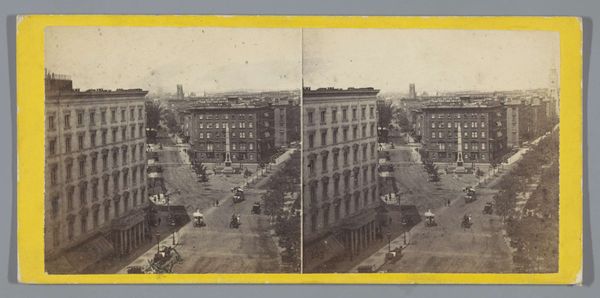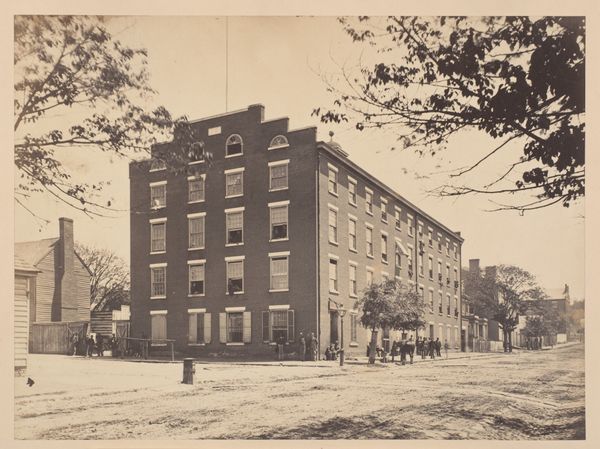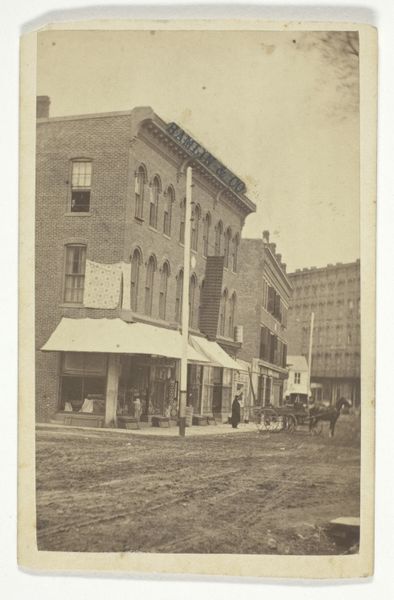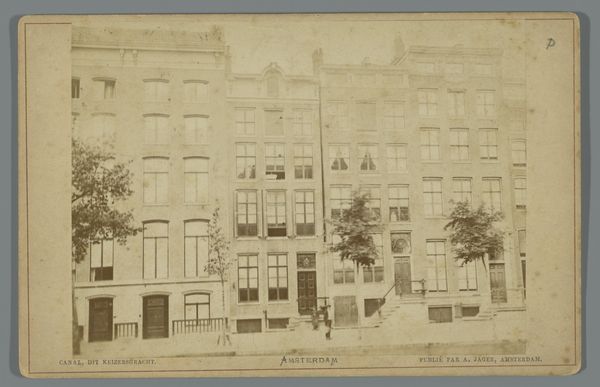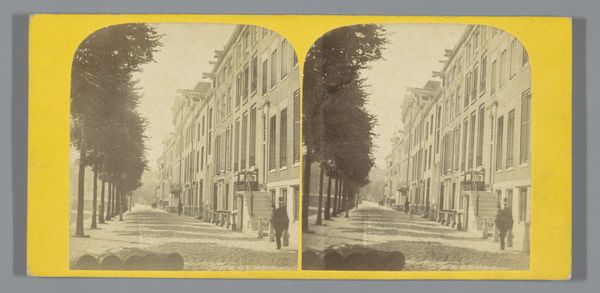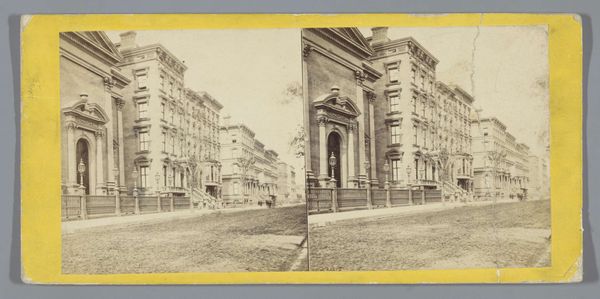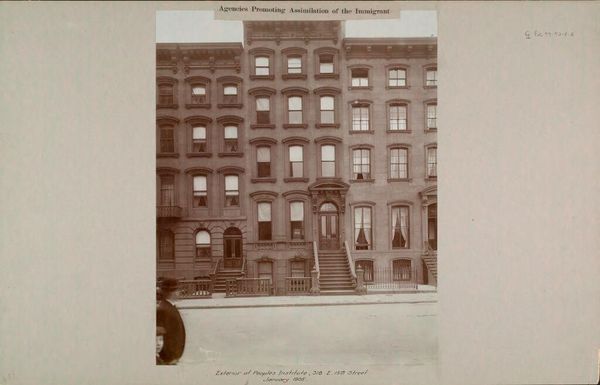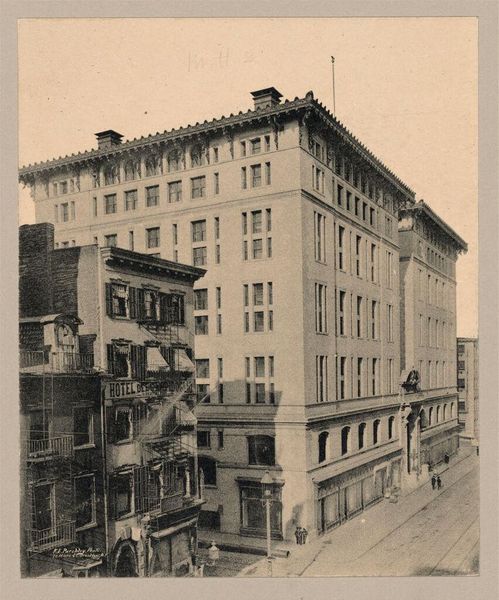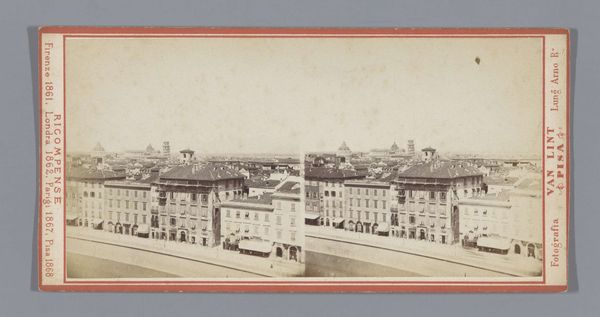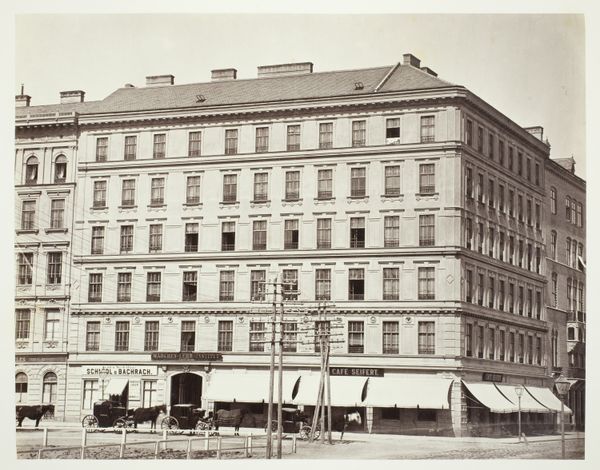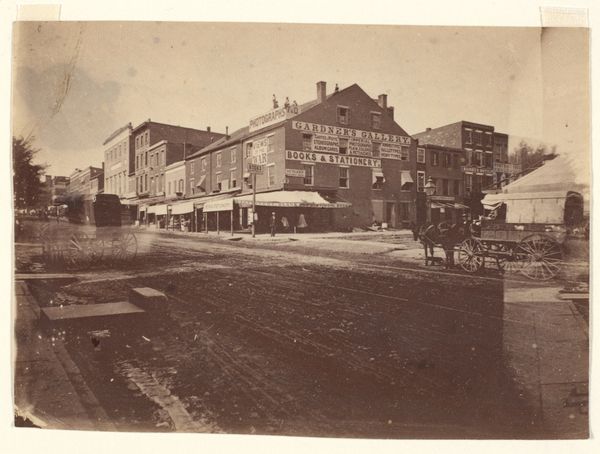
Walker House in East Temple Street, Salt Lake City 1861 - 1865
0:00
0:00
charlesroscoesavage
Rijksmuseum
photography, albumen-print
#
photography
#
cityscape
#
albumen-print
#
realism
Dimensions: height 87 mm, width 176 mm
Copyright: Rijks Museum: Open Domain
Charles Roscoe Savage made this stereocard photograph of the Walker House in Salt Lake City using the wet collodion process, a popular 19th-century technique. A glass plate was coated with chemicals, exposed in the camera while still wet, and then developed immediately. This process demanded speed and skill, reflecting the photographer's labor. The final print, made on albumen paper, gains a distinctive sepia tone and fine detail from this meticulous process. Stereocards like this were mass-produced, catering to a growing middle class eager for visual experiences of distant places. They offered a form of armchair travel, fitting neatly into home viewers. The Walker House itself, a prominent commercial building, symbolizes Salt Lake City's economic development. Savage’s photograph, therefore, not only documents architecture but also reflects the intertwined histories of photography, commerce, and westward expansion. It is through this lens that we gain a fuller appreciation of the work.
Comments
No comments
Be the first to comment and join the conversation on the ultimate creative platform.
